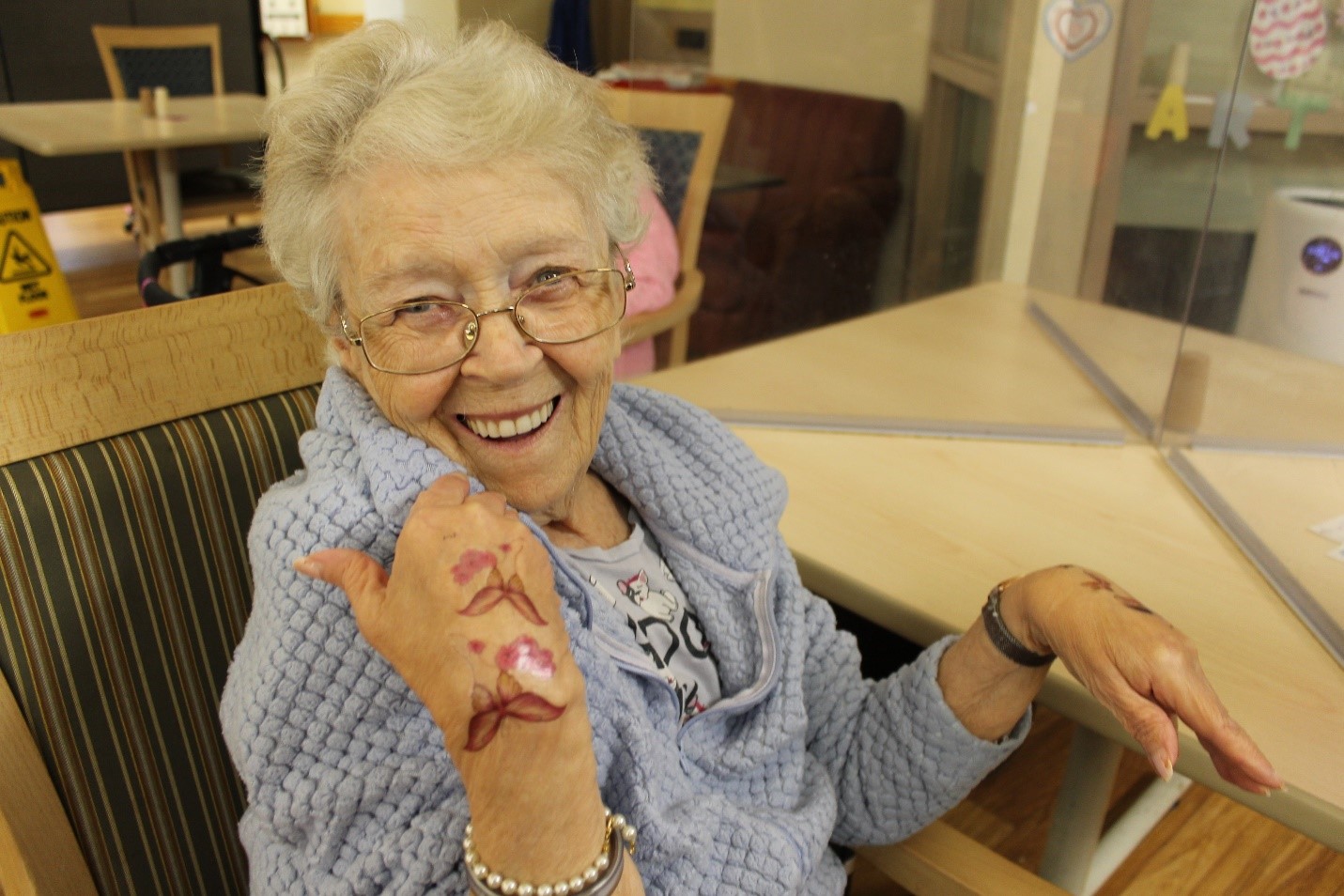
Sherbrooke Village in Saskatoon where the Eden Alternative has been implemented
Life for Linda is colorless and boring. The atmosphere feels cold and clinical – more like a hospital than a home. She gets up when she’s told to. Is provided with meals when she’s not hungry. Sits all day in a chair by herself staring at the TV, or gazing out of the window.
Linda feels as if she doesn’t matter. She thinks: “This isn’t my home. I don’t have a home anymore.” She feels hopeless and helpless – staff are too busy with a million tasks to have time for her.
One of the staff caring for Linda is Tammy. She works part-time, and holds down two other jobs to support her family. Every shift at work feels the same: she’s rushed to do all the tasks on her list and to record them. She’s stressed. She has too many residents to care for. She believes she’s a compassionate person, but she doesn’t have time to show it. Her job is far from rewarding.
Life is quite different for Sylvie. She too lives in an Ontario Long-Term Care (LTC) home but one which has embraced an innovative model of care. It feels like home, sounds like home and looks like home, because the residents, staff and family members are all part of the same community. Sylvie feels loved and cared for – she feels that everyone understands who she is, and how she has lived her life.
Sylvie is content. She has meaningful activities each day. She chooses what she wants to do, when she wants to do it. Meals are enjoyed as family-style eating, where residents can select what they want.
THE NEED FOR CHANGE
Nothing substantive has changed in the past 40 years in how LTC is provided in Ontario. For the most part LTC homes continue to be warehouses where our older, frail citizens are held until they die.
The prevailing attitude to change seems to be: “What’s the point? Nothing ever changes.”
Not true!
Change is happening. A growing number of Ontario LTC homes have embraced a new culture that puts love and respect at the centre of everything they do.
These are homes where family members know their loved ones are getting the best possible care.
A DIFFERENT, EMOTION-BASED, MODEL OF CARE
This innovative model of care replaces institutional, 32-bed units with smaller, homelike environments. Residents have private or two-person rooms and private bathrooms. Each home has a warm, central spot where people can gather and socialize. Family members are respected as a valued part of the care team.
Staff work full-time with good salaries and benefits. They are empowered to care for the residents with compassion and that all-important ‘human touch’. There is less emphasis on the many tasks that must be done (and tracked), and much more on spending quality time with the residents.
This is the fundamental culture change that is so urgently needed!
WHAT DOES IT TAKE?
What does it take to make the change to this new model of care? LTC spaces need to be reimagined and recreated. It takes visionary leadership, and financial investment upfront. It takes commitment from all the players to make it work, education and training in emotion-based care, and a sustainable plan to ensure success.
IS IT WORTH IT?
The benefits are clear and proven. Homes employing this new model of care experience improved happiness for residents, staff and family members. There is more interaction and family engagement, and heightened satisfaction.
There is reduced staff sick time, use of antipsychotic drugs, incidence of falls, and cases of worsened depression. In the US, homes using this new model of care experienced 50% fewer COVID cases, and 30% fewer deaths due to COVID in 2020. Administrative costs per patient were 6% lower.
WHICH WOULD YOU CHOOSE?
Keep the status quo, where most of our elderly citizens will languish in LTC warehouses, leading meaningless lives and risking exposure to future pandemics and other crises.
Or embrace a different, innovative model of care where emotion and connectedness are at the centre. And where residents thrive.
Which one would you choose for your future?
Get Involved Now!
Ontario’s Long-term Care COVID-19 Commission recommended that the government promote and provide funding for long-term care homes that change to recognized, emotion-based models of care where staff know the residents, the residents are engaged and feel they are home and where compassion and respect are at the centre of everything.
Please get involved and ask candidates in your riding in the upcoming provincial election if they agree with this and if so, would they commit to including this in the budget process during the first year of your term?











